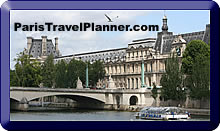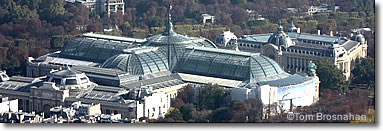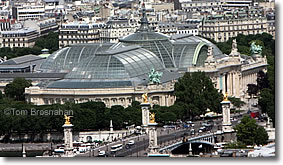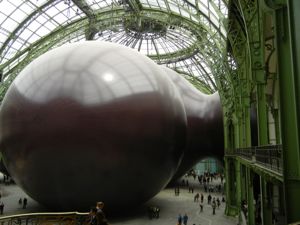 |
Le Grand Palais, Paris, France | |
| The grandest exhibition hall in Paris is a wonderful turn-of-the-century fantasy in glass, stone and cast iron, still used for its original purpose of special exhibitions a century after its construction. | ||
|
|
|
Built in 1897 as Le Grand Palais des Beaux-Arts for Paris's 1900 Exposition Universelle, the Grand Palais is one of the world's few surviving Turn-of-the-Century glass-covered vast exhibition spaces. Other great glass palaces were built in other cities— London's Crystal Palace being the most famous— but most were razed, according to plan, after the end of the world's fairs and "universal expositions" for which they were built. Luckily, Paris preserves its beautiful buildings even if, like the Eiffel Tower and the Palais de Chaillot, they were meant to be temporary. The Grand Palais still proudly dominates a portion of the Paris skyline between the Avenue des Champs-Élysées and the Seine near the Pont Alexandre III (map), its vast glass roof surmounted by a waving tricolore (French flag) easily identifiable from any high point in the city.
Today the Grand Palais is among Paris's largest, best and most prestigious exhibition spaces, hosting immense and wonderful art shows and performances. Because of the high quality of the special exhibitions, tickets often sell briskly, and if you don't order your tickets in advance online, you may wait in line for awhile for admission. Waiting times vary with the popularity of the exhibition. The Grand Palais has hosted a series of special exhibitions called Monumenta, featuring a large work by one artist. These fascinating exhibitions also allow you to admire the architecture of this beautiful building. At the back of the Grand Palais is the Palais de la Découverte, a great museum for kids. Just across the street fron the Grand Palais, the Petit Palais is a smaller but even more beautiful exhibition space, with an extensive fine arts collection. Métro: Franklin Delano Roosevelt or Champs Élysées-Clémenceau Grand Palais
|
|
Above, The Grand Palais
by the
|



